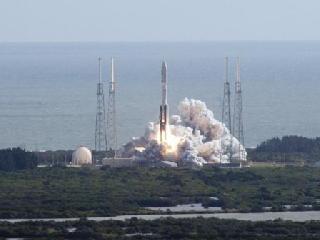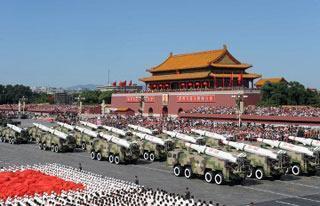
Plutonium is fueling the space agency's Curiosity rover which was launched in November 2011 (in picture).
WASHINGTON (PTI): Shortage of spacecraft fuel that has cast doubts over NASA's future space missions may soon be prevented, as the US space agency is likely to receive new batches of plutonium-238 by as early as 2017.
The US hasn't produced plutonium-238 -- a radioactive isotope that's been powering NASA space probes for five decades -- since the late 1980s, and planetary scientists say stockpiles are worryingly low.
But a production restart is now underway, according to officials with the US Department of Energy (DOE) that supplies plutonium-238 to the space agency.
"We have turned the spade in starting the project for renewed plutonium production," Wade Carroll, DOE's deputy director of space and defence power systems, was quoted as saying by SPACE.com.
"It'll take probably five or six years before the next new plutonium is available," Carroll said at the Nuclear and Emerging Technologies for Space conference in Texas recently.
Plutonium-238 is not used to make nuclear weapons though its isotopic cousin, plutonium-239, is a common bomb-making material. However, scientists take advantage of radioactive nature of the isotope, as they convert the heat it emits to power using a device called a radioisotope thermoelectric generator (RTG).
RTGs have long been the power system of choice for NASA missions to destinations in deep space, where scant sunlight makes solar panels impractical. RTGs have powered some of the space agency's most famous spacecraft, including the Voyager probes that are nearing the edge of the Solar System and the Cassini spacecraft currently surveying Saturn and its moons.
Plutonium is also fuelling NASA's New Horizons probe, which launched in 2006 and will make a close flyby of Pluto in 2015, as well as the car-size Curiosity rover, which is due to land on the Red Planet this August.
While the DOE doesn't publicly disclose the size of the nation's plutonium-238 stores, many planetary scientists think the cupboard is almost bare after the November launch of Curiosity, which carries 3.6 kg of the stuff.
NASA officials, for their part, have said there's enough of the isotope left to fuel space missions through 2020 or thereabouts.
 Previous Article
Previous Article Next Article
Next Article













The Indian Air Force, in its flight trials evaluation report submitted before the Defence Ministry l..
view articleAn insight into the Medium Multi-Role Combat Aircraft competition...
view articleSky enthusiasts can now spot the International Space Station (ISS) commanded by Indian-American astr..
view article